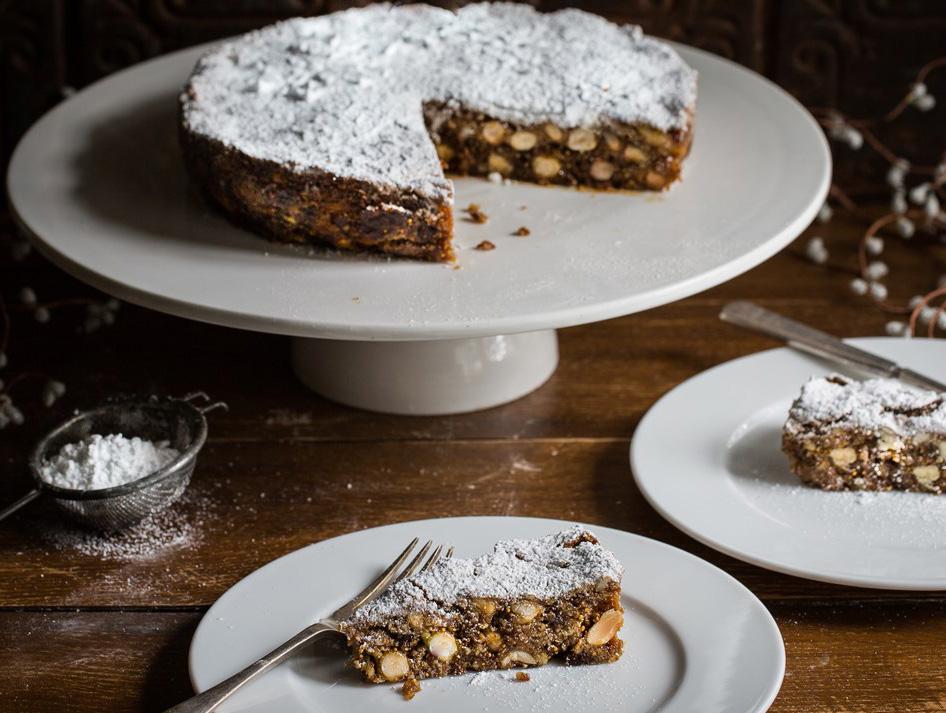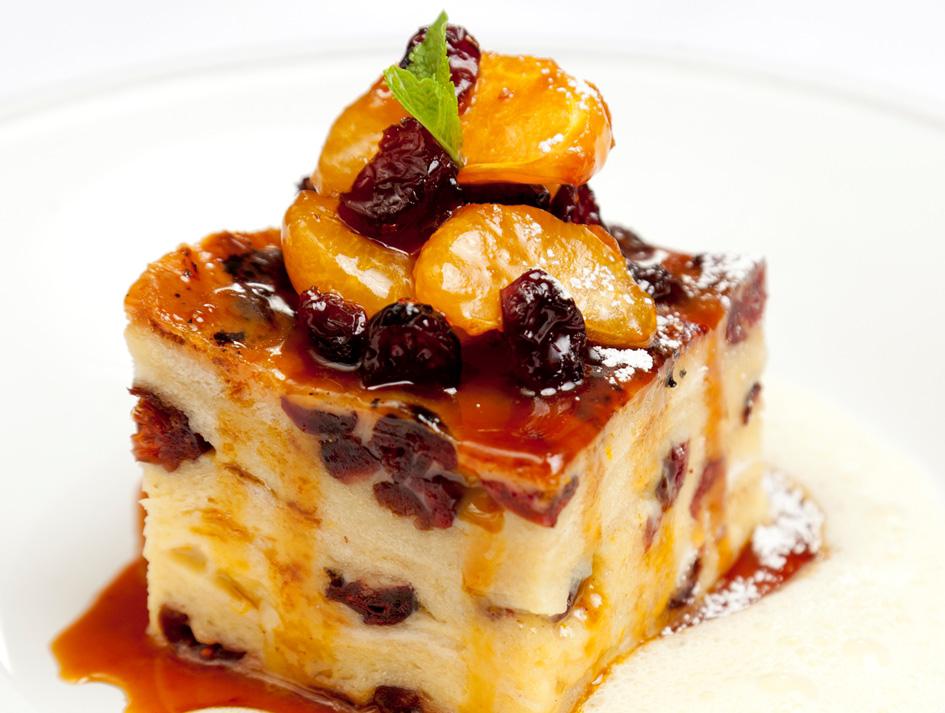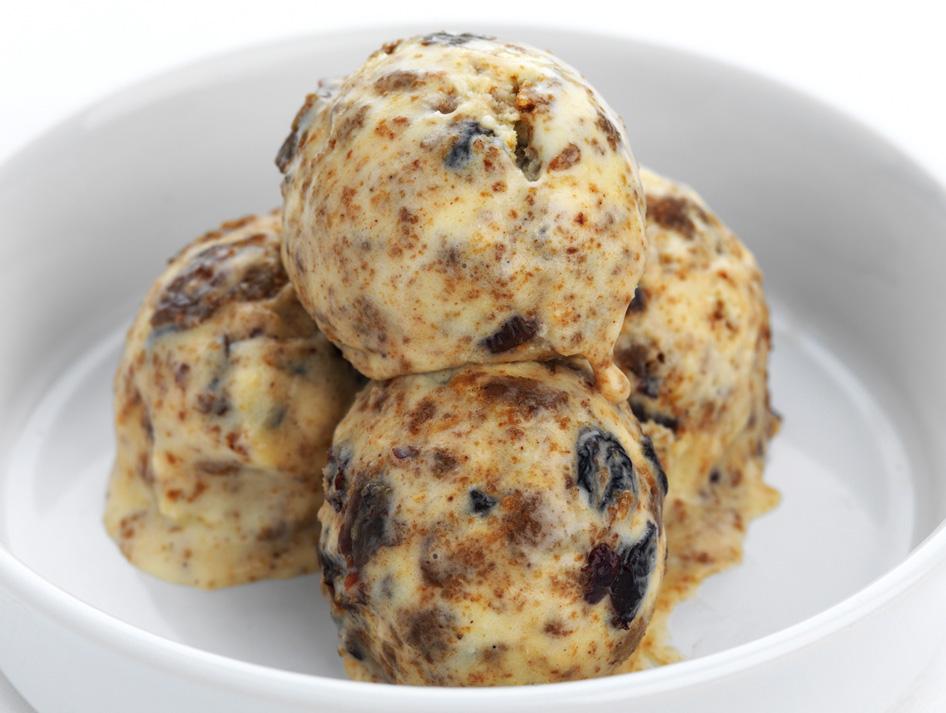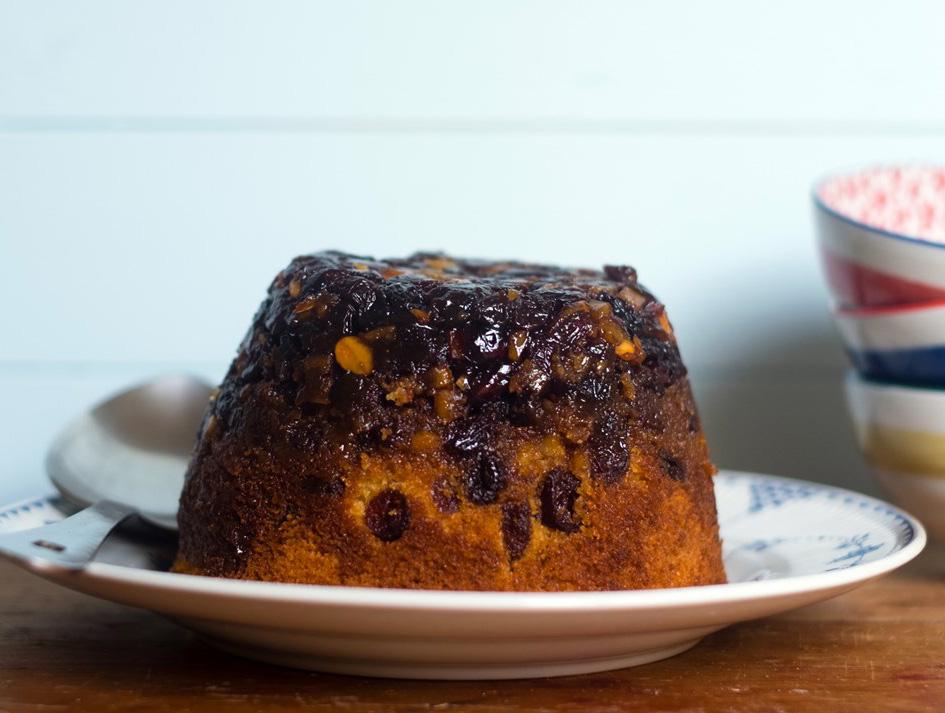Christmas 2016: Festive puddings from Christmas pudding ice-cream to panforte
Make the most of your 'Stir up Sunday' with these Christmas sweet treats

Your support helps us to tell the story
From reproductive rights to climate change to Big Tech, The Independent is on the ground when the story is developing. Whether it's investigating the financials of Elon Musk's pro-Trump PAC or producing our latest documentary, 'The A Word', which shines a light on the American women fighting for reproductive rights, we know how important it is to parse out the facts from the messaging.
At such a critical moment in US history, we need reporters on the ground. Your donation allows us to keep sending journalists to speak to both sides of the story.
The Independent is trusted by Americans across the entire political spectrum. And unlike many other quality news outlets, we choose not to lock Americans out of our reporting and analysis with paywalls. We believe quality journalism should be available to everyone, paid for by those who can afford it.
Your support makes all the difference.Panforte
‘Stir-up Sunday’ may be traditionally a day to make your Christmas pudding, but it is also a great opportunity to get ahead and make other Christmas treats. Panforte is a traditional Italian cake originating from the Tuscan city of Siena. Packed full of nuts, fruit, honey and spices, it has an almost candy-like chewy texture and flavour that is hard to resist.
Panforte is quite straightforward to make, but do line the base with rice paper if you have it. The cake is quite sticky on the bottom and rice paper will make it easier to remove from the tin. If you do not have rice paper, just use some more baking paper as a lining for the base instead.
The cake can be wrapped in parchment, then wrapped over in foil and stored for up to two months at room temperature. If you are making the panforte to give away as Christmas gifts, layer the cut wedges between parchment in gift boxes or bags. Don’t forget to attach a label with storage instructions and an eat-by date.
100g of blanched almonds, whole
100g of blanched hazelnuts, whole
100g of dried apricots
100g of mixed peel
100g of walnuts
150g of dried figs, finely chopped
175g of runny honey
200g of muscovado sugar
1/4 tsp ground cloves
1/4 tsp ground nutmeg
1 1/2 tsp ground cinnamon
2 1/2 tbsp of plain flour
175g of ground almonds
butter, for greasing
icing sugar, for dusting
Preheat the oven to 160C/gas mark 3. Line a baking sheet with baking paper and add the whole hazelnuts and whole almonds. Place in the oven for 10-12 minutes until lightly toasted. Set aside to cool. Grease and line the sides of a 20cm / 8-inch springform cake tin with non-stick baking paper. Line the base with rice paper or more baking paper. Place the apricots, mixed peel and walnuts in a food processor and pulse until finely chopped. Add the figs and pulse briefly again.
Place the runny honey and sugar in a large heavy-based saucepan over a medium flame and gently heat until dissolved. Bring to the boil, add the ground cloves, ground nutmeg, 1 teaspoon of the ground cinnamon, 2 tablespoons of the flour, and stir to combine. Take the pan off the heat and add the whole hazelnuts and almonds, ground almonds and chopped fruit. Stir to combine, the mixture will be quite stiff. Tip the mixture into the prepared cake tin and press down until it is level.
Place the remaining 1/2 teaspoon of ground cinnamon and 1/2 tablespoon of flour into a small bowl and stir to combine. Dust over the top of the panforte mixture and bake for 30-35 minutes until the cake has risen slightly. Brush off the excess flour and leave to cool completely in the tin. Dust with icing sugar, cut into small wedges and serve.
This recipe by Louise Robinson first appeared on the Great British Chefs

White chocolate and cranberry bread-and-butter pudding
James Mackenzie’s bread and butter pudding is laced with sweet white chocolate, perfectly balanced by the tartness of the cranberries. This cranberry bread and butter pudding recipe produces the ultimate Christmas dessert, not only for its festive flavour, but because it can be prepared in advance to reduce stress on the day.
4 eggs
6 egg yolks
80g of caster sugar
500ml of milk
500ml of double cream
150g of butter, softened
10 slices of stale bread, white
2 tsp ground mixed spice
150g of cranberries, semi-dried
200g of white chocolate buttons
6 satsumas
200g of caster sugar
100g of butter
200ml of fresh orange juice
75g of cranberries, semi-dried
2 tbsp of Demerara sugar
Begin by preparing the custard. Beat the eggs and sugar together in a bowl until pale and smooth. Add the milk and cream to a pan, heat until simmering then remove from the heat. Pour the hot milk over the eggs and sugar, mixing well as you do so. Grease an ovenproof dish with some butter. Remove the crusts from the sliced bread and butter all of the slices on one side. Cut the slices in half.
Spread out a layer of the buttered bread to cover the bottom of the dish, slightly overlapping each slice. Sprinkle with a good pinch of mixed spice, some cranberries and some of the white chocolate. Pour over some of the custard to cover the first layer. Repeat this process to make more layers of both the bread and custard until used up, leaving a little custard for serving. Press down firmly, cover with cling film and leave to set in the fridge overnight to allow the bread to soak up the custard.
For the satsuma and cranberry suzette, begin by segmenting the satsumas. Add the sugar to a non-stick pan and heat until a golden caramel forms. Remove from the heat and add the butter. Shake the pan to mix in the butter, add the orange juice and return to the heat. Bring to the boil and reduce until it reaches the consistency of a caramel sauce. Stir in the cranberries and satsuma segments and warm through.
Preheat the oven to 160°C/gas mark 3. Remove the bread and butter pudding from the fridge and sprinkle over some Demerara sugar. Bake for 30-40 minutes, or until it feels firm when pressed lightly – do not overcook it. Remove from the oven and spoon over some warm satsuma and cranberry suzette. Serve with custard, perhaps flavoured with some cloves for an extra wintry flavour.
This recipe by James Mackenzie first appeared on the Great British Chefs

Christmas ice-cream
Marcello Tully's Christmas ice cream recipe is ideally suited to making the most of leftover Christmas pudding (though most cakes will work equally as well). Serve as a Boxing Day treat.
200g of christmas pudding
500ml of milk
1 vanilla pod
7 egg yolks
250g of caster sugar
300ml of double cream
5 drops of vanilla essence
Split the vanilla pod lengthways with the tip of a sharp knife and scrape the inside to remove the seeds. Add both the pod and the seeds to a heavy-based saucepan with the milk and bring to the boil. Once boiling, remove from the heat and set aside – remember to remove the scraped out vanilla pod. In a separate bowl, whisk together the sugar and egg yolks until creamy in colour. Then, gradually whisk in the hot milk.
Pour the mixture into a separate saucepan over a low-medium heat and keep stirring with a wooden spoon until the mix thickens in consistency enough to coat the back of the spoon. Do not allow to boil as the mix will curdle. Gently incorporate the crumbled Christmas pudding and continue to stir gently. Pour the contents of the pan into a large bowl and allow to cool slightly. Meanwhile, whip the double cream until soft peaks form and add to the bowl, along with the drops of vanilla essence. Churn in an ice cream maker, or if you do not have this piece of equipment, simply place the mix into the freezer and whisk every once in a while until it has frozen.
This recipe by Marcello Tully first appeared on the Great British Chefs

Mincemeat sponge pudding
Homemade mincemeat is so much tastier than shop bought, the combination of good quality dried fruit mixed with spices and alcohol tastes so festive and warming. Sometimes recipes that include mincemeat can be heavy and quite dense, if you want a lighter alternative to the traditional offerings, this mincemeat doesn’t contain suet and is very quick to make with minimal preparation and cooking needed. This recipe makes more than you need for the sponge pudding, but there are plenty of other things you can use the mincemeat for, I particularly like a spoonful on top of some warm porridge.
This mincemeat sponge pudding is a great quick-fix pudding. It’s baked instead of steamed, so it has a much shorter cooking time than traditional sponge puddings. Also most of the ingredients you would normally have in the cupboard, so if you have last-minute guests this is a pudding you could quickly prepare with very little advance warning. The ground almonds in the recipe help to keep the sponge moist and soak in some of the syrup and juices that bubble away from the mincemeat when cooking. Serve the warm pudding upturned onto a plate with clotted cream, custard or double cream and enjoy.
Mincemeat
175g of raisins
100g of dried cranberries
175g of sultanas
175g of mixed peel
175g of dried apricots
1 apple, for eating
125g of butter, cut into cubes
50g of whole almonds, roughly chopped
225g of dark muscovado sugar
1 1/2 tsp mixed spice
1 lemon, grated rind and juice
150ml of spiced rum
Sponge pudding
75g of golden syrup
130g of plain flour, sifted
1 1/2 tsp baking powder
100g of ground almonds
130g of unsalted butter, softened
130g of caster sugar
3 eggs
5 tbsp of milk
Begin by making the mincemeat. Place all of the ingredients apart from the rum in a large saucepan. Heat the mixture, allowing the butter to melt, and simmer very gently, stirring regularly. After 10 minutes, remove the mincemeat from the heat. Allow to cool completely then stir in the spiced rum. You can omit the rum if you don’t want to use it, just add a little water if the mincemeat is too dry. The mincemeat will make more than you need for this recipe. Reserve 200g of the mincemeat and place the rest in sterilised jars. The mincemeat will keep for a few months, maturing the longer it is left.
To make the sponge pudding, preheat the oven to 180C/gas mark 4. Grease the bottom and sides of a 1 litre pudding basin. Place the golden syrup in the bottom of the basin. Add the reserved 200g of mincemeat to the basin, completely covering the syrup. You may need more than 200g if it is looking a bit sparse. To make the sponge pudding mixture, combine the flour, baking powder and ground almonds in a mixing bowl.
Beat the butter and sugar together until pale and fluffy then add the eggs one at a time, beating them in as you go. Next add the milk and stir it in. Finally, sift in the flour and almond mixture until evenly combined. Take the sponge mixture and spread it over the mincemeat. Bake for 35-40 minutes until golden and risen, and a skewer poked into the sponge comes out clean. Turn the sponge out on to a plate and carefully remove the basin. Serve the warm pudding with cream or custard. This pudding is best eaten on the day it’s made, but leftovers can be warmed in the oven or microwave and enjoyed the next day.
This recipe by Angela Field first appeared on the Great British Chefs
Join our commenting forum
Join thought-provoking conversations, follow other Independent readers and see their replies
Comments